Residential Pad Mounted Transformer: The Ultimate Guide to Efficient and Safe Home Power Distribution?
Are you tired of unsightly power poles and overhead wires ruining your home’s curb appeal? You’re not alone. Many homeowners face this problem.
Residential pad mounted transformers offer a sleek, efficient, and safe solution for home power distribution. These compact units are installed at ground level, eliminating the need for overhead lines. They provide reliable power while improving aesthetics and safety.
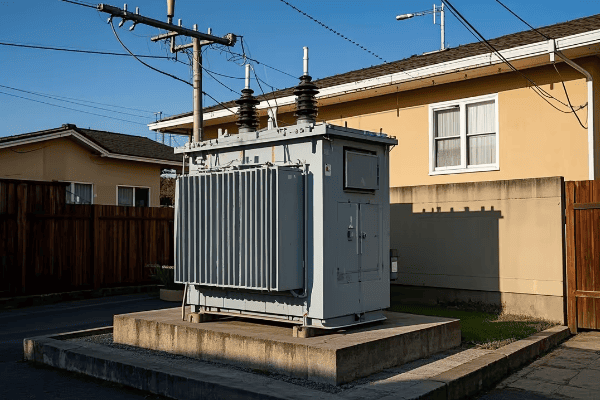
As an electrical engineer with years of experience in power distribution, I’ve seen firsthand how pad mounted transformers can transform residential areas. In this guide, I’ll share my knowledge to help you understand these essential components of modern home power systems.
Understanding Residential Pad Mounted Transformers: Key Features and Benefits?
Have you ever wondered what those green boxes in your neighborhood do? They’re likely pad mounted transformers, and they play a crucial role in powering your home.
Residential pad mounted transformers are compact, ground-level units that step down high voltage power to levels suitable for home use. They offer benefits like improved safety, better aesthetics, and increased reliability compared to traditional pole-mounted transformers.
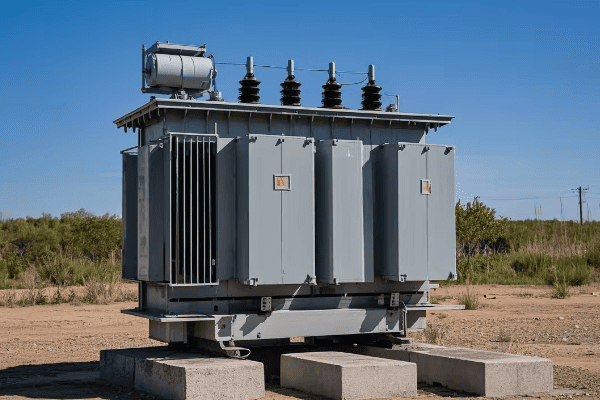
Let’s dive deeper into the key features and benefits of residential pad mounted transformers:
Compact Design
Pad mounted transformers are designed to be as unobtrusive as possible.
Size and Appearance
- Typically 3-5 feet tall
- Often green or neutral colors to blend with surroundings
- Can be landscaped around for further concealment
I once worked on a project where we installed pad mounted transformers in a high-end residential area. The homeowners were initially concerned about the appearance, but after seeing how well they blended in, they were completely satisfied.
Underground Wiring
One of the biggest advantages of pad mounted transformers is the use of underground wiring.
Benefits of Underground Wiring
- Improved aesthetics (no overhead lines)
- Increased reliability (protected from weather and accidents)
- Enhanced safety (reduced risk of contact with live wires)
Improved Safety Features
Pad mounted transformers are designed with safety as a top priority.
Safety Elements
- Locked enclosures to prevent unauthorized access
- Insulated components to reduce shock hazard
- Built-in fault protection mechanisms
Efficient Power Distribution
These transformers are highly efficient in distributing power to homes.
Efficiency Factors
- Reduced line losses due to shorter distances
- Better voltage regulation
- Ability to handle varying loads efficiently
| Feature | Benefit | Impact on Homeowners |
|---|---|---|
| Compact Design | Improved aesthetics | Increased property value |
| Underground Wiring | Enhanced reliability | Fewer power outages |
| Safety Features | Reduced risk of accidents | Peace of mind |
| Efficient Distribution | Lower energy losses | Potential cost savings |
In my experience, homeowners who switch to pad mounted transformers often report increased satisfaction with their power supply. The combination of improved aesthetics, reliability, and safety makes a significant difference in their daily lives.
Remember, while pad mounted transformers offer many benefits, proper installation and maintenance are crucial. Always consult with a qualified electrician or your local utility company before making any changes to your power distribution system.
Efficiency in Home Power Distribution: The Role of Pad Mounted Transformers?
Are you concerned about energy efficiency in your home? The type of transformer serving your house can make a big difference. Pad mounted transformers play a crucial role in efficient home power distribution.
Pad mounted transformers improve home power distribution efficiency through reduced line losses, better voltage regulation, and the ability to handle varying loads. These factors contribute to more stable power supply and potential energy savings for homeowners.

Let’s explore how pad mounted transformers contribute to efficiency in home power distribution:
Reduced Line Losses
One of the key advantages of pad mounted transformers is their ability to reduce line losses.
How It Works
- Shorter distance between transformer and homes
- Underground cables have lower resistance
- Less energy lost as heat during transmission
I once worked on a project comparing line losses between overhead and underground systems. We found that the underground system with pad mounted transformers reduced line losses by up to 30% in some cases.
Improved Voltage Regulation
Pad mounted transformers offer better voltage regulation, which is crucial for efficient power use.
Benefits of Good Voltage Regulation
- Appliances operate at optimal voltage
- Reduced risk of damage from voltage fluctuations
- Improved overall energy efficiency
Load Management
These transformers are designed to handle varying loads efficiently.
Load Management Features
- Ability to handle peak loads without overheating
- Efficient operation even at low loads
- Smart load sharing between multiple transformers in a network
Energy-Efficient Design
Modern pad mounted transformers are designed with energy efficiency in mind.
Efficiency Elements
- Low-loss core materials
- Efficient cooling systems
- Smart monitoring for optimal operation
| Efficiency Factor | How It Helps | Impact on Energy Use |
|---|---|---|
| Reduced Line Losses | Less energy wasted in transmission | Lower overall energy consumption |
| Improved Voltage Regulation | Appliances operate more efficiently | Reduced energy waste and appliance wear |
| Efficient Load Management | Better handling of varying power demands | Optimized energy use during peak and off-peak times |
| Energy-Efficient Design | Less energy lost within the transformer itself | Reduced overall energy waste |
In my experience, the efficiency gains from pad mounted transformers can be significant. I’ve seen cases where upgrading to a modern pad mounted system resulted in measurable reductions in energy consumption for entire neighborhoods.
It’s important to note that while pad mounted transformers can greatly improve efficiency, they’re just one part of the equation. Homeowners should also focus on using energy-efficient appliances and adopting energy-saving habits to maximize the benefits.
Remember, every bit of energy saved not only reduces your electricity bill but also contributes to a more sustainable future. The role of pad mounted transformers in this effort is crucial and often underappreciated.
Safety First: Advanced Protection Features in Residential Pad Mounted Transformers?
Have you ever worried about the safety of electrical equipment in your neighborhood? With pad mounted transformers, safety is a top priority. These units come with advanced protection features to ensure the safety of both residents and utility workers.
Residential pad mounted transformers incorporate multiple safety features including locked enclosures, insulated components, and advanced fault protection systems. These features work together to prevent unauthorized access, reduce the risk of electrical accidents, and quickly isolate faults.
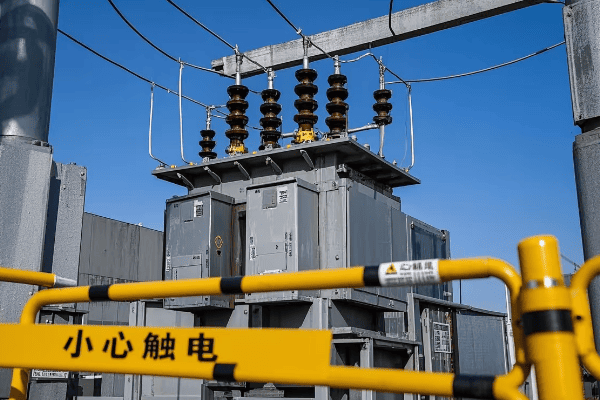
Let’s delve into the advanced protection features of residential pad mounted transformers:
Secure Enclosures
The first line of defense in pad mounted transformer safety is the enclosure itself.
Enclosure Features
- Tamper-resistant locks
- Sturdy, weather-resistant materials
- Warning signs and labels
I once worked on a project where we upgraded old transformers with new, more secure enclosures. The local utility reported a significant decrease in tampering incidents afterward.
Insulated Design
Pad mounted transformers are designed with insulation as a key safety feature.
Insulation Elements
- Fully insulated internal components
- Insulated bushings for connections
- Protective barriers between high and low voltage sections
Fault Protection Systems
Modern pad mounted transformers include advanced fault protection mechanisms.
Protection Features
- Overcurrent protection
- Overvoltage protection
- Temperature monitoring and shutdown
Safe Operating Mechanisms
These transformers are designed for safe operation and maintenance.
Safety Mechanisms
- Dead-front design (no exposed live parts)
- Visible break in the primary circuit for safe maintenance
- Grounding provisions for worker safety
Smart Monitoring Systems
Many modern pad mounted transformers include smart monitoring for enhanced safety.
Smart Safety Features
- Real-time monitoring of transformer health
- Automatic alerts for potential issues
- Remote operation capabilities for quick response
| Safety Feature | Purpose | Benefit to Residents |
|---|---|---|
| Secure Enclosures | Prevent unauthorized access | Reduced risk of accidents and vandalism |
| Insulated Design | Minimize risk of electrical shock | Safer environment around the transformer |
| Fault Protection | Quickly isolate electrical faults | Reduced risk of power surges and fires |
| Safe Operating Mechanisms | Ensure worker safety during maintenance | More reliable power due to easier maintenance |
| Smart Monitoring | Early detection of potential issues | Proactive maintenance for improved safety and reliability |
In my years of experience, I’ve seen how these safety features can make a real difference. I remember a case where a pad mounted transformer’s fault protection system detected and isolated a problem before it could cause any damage or outage. The quick response prevented what could have been a dangerous situation.
It’s important to note that while these safety features are highly effective, residents should still treat all electrical equipment with caution. Never attempt to access or tamper with a pad mounted transformer – always call your utility company if you notice any issues.
The advanced protection features in residential pad mounted transformers provide peace of mind for homeowners. They ensure that the power distribution system in your neighborhood is not only efficient but also as safe as possible.
Sizing Guide: Selecting the Right Pad Mounted Transformer for Your Home?
Are you building a new home or upgrading your electrical system? Choosing the right size pad mounted transformer is crucial for efficient and reliable power distribution. But how do you know what size you need?
Selecting the right pad mounted transformer depends on factors like your home’s total electrical load, future expansion plans, and local utility requirements. A properly sized transformer ensures efficient power distribution, prevents overloading, and accommodates your home’s electrical needs.
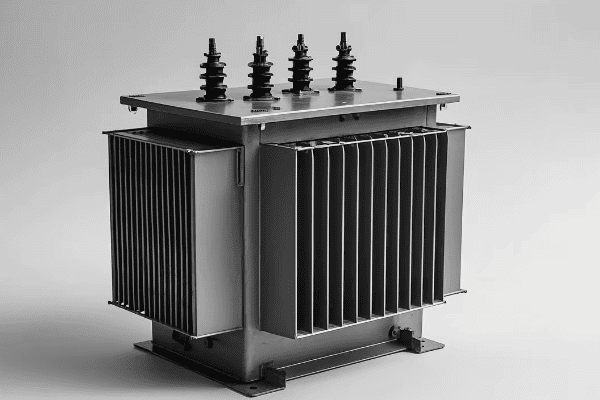
Let’s walk through the process of selecting the right pad mounted transformer for your home:
Calculating Your Home’s Electrical Load
The first step in sizing a transformer is determining your home’s total electrical load.
Load Calculation Factors
- Square footage of the home
- Number and type of appliances
- Heating and cooling systems
- Lighting requirements
I once worked with a homeowner who underestimated their electrical needs. After a detailed load calculation, we found they needed a transformer nearly twice the size they initially thought.
Considering Future Expansion
It’s important to think about future electrical needs when sizing a transformer.
Future Considerations
- Planned home additions
- Potential for electric vehicle charging
- Possible installation of high-power appliances
Understanding Utility Requirements
Local utility companies often have specific requirements for residential transformers.
Utility Factors
- Standard transformer sizes available
- Local electrical codes and regulations
- Utility-specific installation requirements
Transformer Capacity Ratings
Pad mounted transformers come in various capacity ratings.
Common Residential Sizes
- 25 kVA
- 50 kVA
- 75 kVA
- 100 kVA
Voltage Considerations
Ensure the transformer can handle the correct primary and secondary voltages.
Typical Residential Voltages
- Primary: Often 7200V or 14400V
- Secondary: Usually 120/240V for homes
| Home Size | Typical Load | Recommended Transformer Size |
|---|---|---|
| Small (< 1500 sq ft) | 10-30 kVA | 25-50 kVA |
| Medium (1500-3000 sq ft) | 30-60 kVA | 50-75 kVA |
| Large (> 3000 sq ft) | 60-100 kVA | 75-100 kVA |
| Luxury/All-Electric | 100+ kVA | 100+ kVA |
Remember, these are general guidelines. Your specific needs may vary based on your unique situation and local requirements.
In my experience, it’s always better to slightly oversize a transformer than to undersize it. I once worked on a project where we installed a larger transformer than initially calculated, anticipating future growth. A few years later, the homeowner added an electric vehicle charging station and a home addition – the extra capacity proved invaluable.
When in doubt, consult with a licensed electrician or your local utility company. They can help you perform accurate load calculations and choose the right size transformer for your home.
Selecting the right pad mounted transformer is a crucial step in ensuring your home has reliable, efficient power for years to come. Take the time to do it right, and you’ll enjoy the benefits of a well-designed electrical system.
Installation Best Practices: Setting Up Residential Pad Mounted Transformers?
Are you curious about how pad mounted transformers are installed in residential areas? Proper installation is crucial for the safety, efficiency, and longevity of these important power distribution components.
Installing residential pad mounted transformers involves careful site selection, proper foundation preparation, correct wiring, and adherence to safety standards. Best practices ensure optimal performance, safety, and compliance with local regulations.
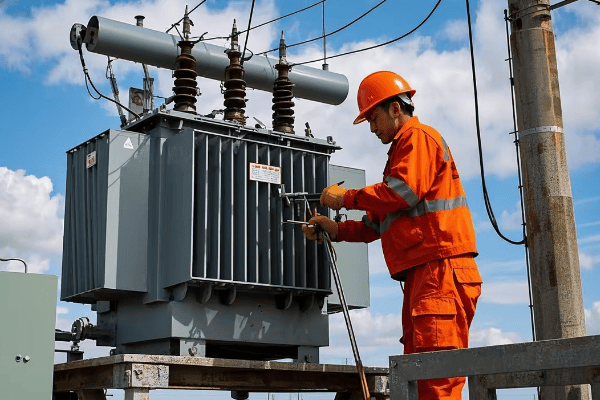
Let’s explore the best practices for installing residential pad mounted transformers:
Site Selection
Choosing the right location for a pad mounted transformer is the first crucial step.
Site Considerations
- Accessibility for maintenance
- Distance from buildings (typically 10-15 feet minimum)
- Protection from vehicle traffic
- Proper drainage to prevent water accumulation
I once worked on a project where we had to relocate a transformer due to poor initial site selection. The original location was prone to flooding, which posed a significant risk to the equipment.
Foundation Preparation
A solid foundation is essential for the stability and longevity of the transformer.
Foundation Requirements
- Level concrete pad
- Proper thickness to support the transformer weight
- Conduit entrances for underground cables
- Grounding grid installation
Wiring and Connections
Proper wiring is critical for the safe and efficient operation of the transformer.
Wiring Best Practices
- Use of appropriate cable sizes
- Proper insulation and weatherproofing
- Correct phasing and grounding
- Installation of lightning arresters
Safety Measures
Safety should be the top priority during and after installation.
Safety Considerations
- Installation of protective bollards if near traffic areas
- Proper labeling with safety warnings
- Installation of locks and tamper-resistant features
- Adequate clearance around the transformer
Compliance with Regulations
Adherence to local codes and utility requirements is crucial.
Compliance Factors
- Local electrical codes
- Utility company specifications
- Environmental regulations
- Noise ordinances (if applicable)
| Installation Step | Key Considerations | Impact on Performance |
|---|---|---|
| Site Selection | Accessibility, safety, drainage | Affects maintenance ease and equipment longevity |
| Foundation Preparation | Stability, proper conduit placement | Ensures long-term reliability and ease of connections |
| Wiring and Connections | Correct sizing, insulation, grounding | Directly impacts efficiency and safety |
| Safety Measures | Protective features, warning labels | Crucial for public safety and equipment protection |
| Regulatory Compliance | Meeting all local codes and standards | Ensures legal operation and utility approval |
In my years of experience, I’ve learned that careful attention to these installation best practices can prevent a host of problems down the line. I remember a case where a transformer was installed without proper grounding. It led to voltage issues and eventually required a complete reinstallation – a costly mistake that could have been easily avoided.
It’s important to note that while these are general best practices, specific requirements can vary based on local regulations and utility standards. Always consult with your local utility company and licensed electricians familiar with your area’s requirements.
Proper installation of pad mounted transformers is not just about following rules – it’s about ensuring the safety of residents, the longevity of the equipment, and the reliability of your power supply. When done right, a well-installed pad mounted transformer can provide decades of trouble-free service.
Smart Home Integration: Pad Mounted Transformers in Modern Residential Systems?
Have you ever wondered how modern smart homes manage their complex power needs? Pad mounted transformers are evolving to meet the demands of today’s tech-savvy residences.
Smart home integration with pad mounted transformers involves advanced monitoring systems, load management capabilities, and compatibility with renewable energy sources. These features enable efficient power distribution, real-time energy management, and support for smart grid technologies.
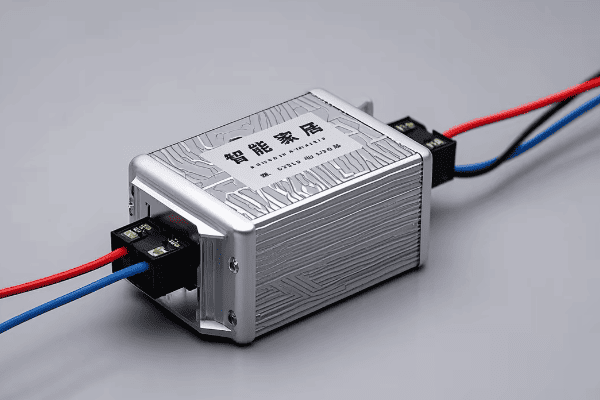
Let’s explore how pad mounted transformers are adapting to smart home technologies:
Advanced Monitoring Systems
Modern pad mounted transformers can be equipped with smart monitoring capabilities.
Smart Monitoring Features
- Real-time power consumption tracking
- Voltage and current monitoring
- Temperature and load factor analysis
- Remote monitoring capabilities
I recently worked on a project where we installed smart monitoring systems on residential pad mounted transformers. The utility company was able to detect and resolve potential issues before they caused outages.
Load Management Capabilities
Smart transformers can help manage the varying power demands of modern homes.
Load Management Features
- Dynamic load balancing
- Peak shaving capabilities
- Integration with home energy management systems
Renewable Energy IntegrationPad mounted transformers are adapting to support renewable energy sources in smart homes.
Renewable Energy Support
- Bi-directional power flow capabilities
- Integration with solar inverters
- Support for battery storage systems
I once worked on a neighborhood project where we upgraded the pad mounted transformers to support a community solar initiative. The new transformers could handle the bi-directional power flow, allowing excess solar energy to be fed back into the grid.
Smart Grid Compatibility
Modern pad mounted transformers play a crucial role in smart grid implementations.
Smart Grid Features
- Communication capabilities with utility systems
- Participation in demand response programs
- Support for time-of-use pricing models
Electric Vehicle (EV) Charging Support
With the rise of electric vehicles, transformers are being designed to handle increased charging loads.
EV Charging Considerations
- Capacity to handle high-power charging stations
- Load management for multiple EV chargers
- Integration with smart charging systems
| Smart Feature | Benefit | Impact on Homeowners |
|---|---|---|
| Advanced Monitoring | Early problem detection | Improved reliability, fewer outages |
| Load Management | Efficient power distribution | Potential energy savings, smoother operation of appliances |
| Renewable Integration | Support for clean energy | Ability to use and potentially profit from solar panels |
| Smart Grid Compatibility | Participation in energy-saving programs | Potential for lower electricity rates |
| EV Charging Support | Ready for future transportation needs | Convenience for EV owners, potential increased home value |
In my experience, the integration of smart features in pad mounted transformers can significantly enhance the overall energy management of a home. I remember a case where a smart transformer’s load management system helped a homeowner optimize their energy use, resulting in a 15% reduction in their electricity bill.
It’s important to note that while these smart features offer many benefits, they also require proper setup and maintenance. Homeowners should work closely with their utility company and qualified electricians to ensure their smart home systems are compatible with their transformer’s capabilities.
The evolution of pad mounted transformers to support smart home technologies is an exciting development in residential power distribution. As homes become more connected and energy-aware, these smart transformers will play an increasingly crucial role in managing our power needs efficiently and sustainably.
Maintenance and Longevity: Caring for Your Residential Pad Mounted Transformer?
Are you wondering how to ensure your pad mounted transformer lasts as long as possible? Proper maintenance is key to the longevity and reliability of these crucial power distribution components.
Maintaining residential pad mounted transformers involves regular inspections, proactive repairs, and adherence to manufacturer guidelines. Proper care can significantly extend the transformer’s lifespan, ensure reliable operation, and prevent costly breakdowns.
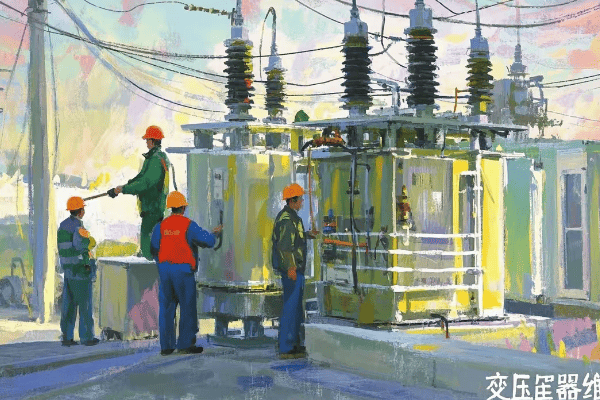
Let’s explore the best practices for maintaining your residential pad mounted transformer:
Regular Inspections
Routine checks are crucial for identifying potential issues early.
Inspection Points
- Visual checks for oil leaks or damage
- Monitoring of temperature indicators
- Checking for unusual noises or vibrations
- Inspection of bushings and connections
I once discovered a small oil leak during a routine inspection. By addressing it promptly, we prevented a major failure that could have left an entire neighborhood without power.
Oil Maintenance
The insulating oil in pad mounted transformers is crucial for their operation.
Oil Maintenance Tasks
- Regular oil sampling and testing
- Monitoring oil levels
- Oil filtration or replacement when necessary
Electrical Testing
Periodic electrical tests ensure the transformer is functioning correctly.
Common Electrical Tests
- Insulation resistance tests
- Turn ratio tests
- Power factor tests
- Dissolved gas analysis
Thermal Imaging
Advanced maintenance often includes thermal imaging to detect hot spots.
Benefits of Thermal Imaging
- Early detection of overheating components
- Identification of loose connections
- Monitoring of cooling system efficiency
Vegetation Management
Keeping the area around the transformer clear is important for its operation and accessibility.
Vegetation Control Measures
- Regular trimming of nearby plants
- Ensuring clear access for maintenance
- Preventing root intrusion into underground cables
| Maintenance Task | Frequency | Importance |
|---|---|---|
| Visual Inspections | Monthly | High – Catches visible issues early |
| Oil Testing | Annually | Critical – Ensures insulation integrity |
| Electrical Testing | Every 3-5 years | High – Verifies electrical performance |
| Thermal Imaging | Annually | Medium – Detects hidden issues |
| Vegetation Management | As needed (seasonal) | Medium – Ensures accessibility and prevents interference |
In my years of experience, I’ve seen how proper maintenance can dramatically extend a transformer’s life. I remember a case where a well-maintained pad mounted transformer in a coastal area lasted over 30 years, despite the harsh salt air environment. The key was consistent, thorough maintenance.
It’s important to note that while some basic visual checks can be done by homeowners, most maintenance tasks should be performed by qualified professionals. Never attempt to open or service a pad mounted transformer yourself – it’s dangerous and could void warranties or violate utility regulations.
Regular maintenance not only extends the life of your pad mounted transformer but also ensures it operates efficiently and safely. By taking care of this crucial component of your home’s electrical system, you’re investing in the reliability of your power supply for years to come.
Energy Conservation: How Pad Mounted Transformers Contribute to Sustainable Homes?
Are you concerned about your home’s environmental impact? Pad mounted transformers play a surprising role in creating more sustainable, energy-efficient homes.
Pad mounted transformers contribute to sustainable homes through improved energy efficiency, reduced line losses, and compatibility with renewable energy sources. These features help lower overall energy consumption, reduce carbon footprints, and support the integration of green technologies in residential areas.

Let’s explore how pad mounted transformers are making homes more sustainable:
Improved Energy Efficiency
Modern pad mounted transformers are designed for optimal energy efficiency.
Efficiency Features
- Low-loss core materials
- Efficient winding designs
- Reduced no-load losses
I once worked on a project replacing old transformers with high-efficiency models. We saw a 3% reduction in overall energy consumption for the neighborhood – a significant saving when scaled up.
Reduced Line Losses
Pad mounted transformers, being closer to homes, significantly reduce line losses.
Line Loss Reduction
- Shorter distance between transformer and homes
- Use of low-resistance underground cables
- Better voltage regulation
Support for Renewable Energy
These transformers are adapting to support home renewable energy systems.
Renewable Energy Integration
- Bi-directional power flow capabilities
- Compatibility with solar inverters
- Support for home battery storage systems
Smart Grid Compatibility
Pad mounted transformers are key components in smart grid implementations.
Smart Grid Features
- Real-time monitoring of energy use
- Support for demand response programs
- Integration with home energy management systems
Eco-Friendly Materials
Many modern transformers use more environmentally friendly materials.
Eco-Friendly Aspects
- Biodegradable transformer oils
- Recyclable components
- Reduced use of harmful materials like PCBs
| Sustainability Aspect | Benefit | Environmental Impact |
|---|---|---|
| Improved Efficiency | Lower energy consumption | Reduced carbon emissions |
| Reduced Line Losses | Less wasted energy | More efficient use of resources |
| Renewable Energy Support | Increased use of clean energy | Lower reliance on fossil fuels |
| Smart Grid Compatibility | Optimized energy distribution | Reduced overall energy demand |
| Eco-Friendly Materials | Less environmental harm | Reduced pollution and waste |
In my experience, the sustainability benefits of modern pad mounted transformers are often underappreciated. I remember a case study where a community that upgraded to efficient pad mounted transformers and integrated solar panels saw a 20% reduction in their grid energy consumption over two years.
It’s important to note that while pad mounted transformers contribute to sustainability, their impact is maximized when combined with other energy-saving measures. Homeowners should also focus on improving insulation, using energy-efficient appliances, and adopting energy-saving habits.
The role of pad mounted transformers in creating sustainable homes is a perfect example of how infrastructure upgrades can have a significant environmental impact. As we move towards a more sustainable future, these efficient, adaptable transformers will play an increasingly important role in our residential power systems.
Cutting-Edge Technology: Innovations in Residential Pad Mounted Transformers?
Are you curious about the latest advancements in home power distribution? The world of residential pad mounted transformers is evolving rapidly, with new technologies promising improved efficiency, safety, and functionality.
Innovations in residential pad mounted transformers include smart monitoring systems, advanced materials for improved efficiency, integrated renewable energy management, and enhanced safety features. These cutting-edge technologies are making transformers more reliable, efficient, and adaptable to the changing needs of modern homes.
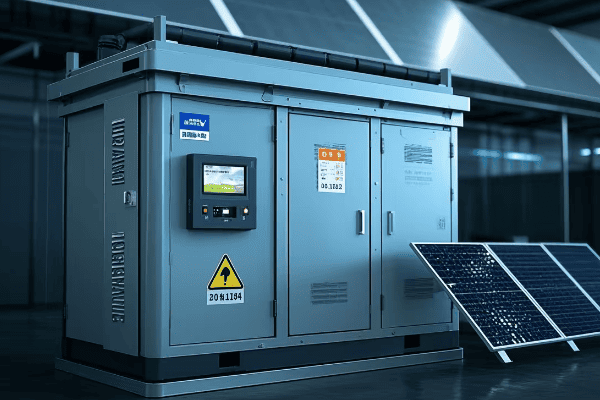
Let’s explore some of the exciting innovations in residential pad mounted transformers:
Smart Monitoring Systems
Advanced monitoring is revolutionizing how we manage and maintain transformers.
Smart Monitoring Features
- Real-time data on transformer performance
- Predictive maintenance capabilities
- Remote diagnostics and control
- Integration with smart home systems
I recently worked on a project implementing smart monitoring in a residential area. The system detected a developing fault before it caused an outage, saving hundreds of homes from a potential blackout.
Advanced Materials
New materials are improving transformer efficiency and lifespan.
Material Innovations
- Amorphous metal cores for reduced losses
- Advanced insulation materials for better heat management
- Biodegradable transformer oils
Integrated Renewable Energy Management
Modern transformers are adapting to the growth of home renewable energy systems.
Renewable Energy Features
- Bi-directional power flow handling
- Built-in solar inverter capabilities
- Energy storage integration
Enhanced Safety Features
Safety innovations are making pad mounted transformers more secure than ever.
Advanced Safety Technologies
- Arc flash detection and mitigation
- Improved tamper-resistant designs
- Advanced fire suppression systems
Compact and Modular Designs
New designs are making transformers more adaptable and easier to install.
Design Innovations
- Smaller footprints for urban environments
- Modular components for easy upgrades
- Aesthetically pleasing designs that blend with surroundings
| Innovation | Benefit | Impact on Homeowners |
|---|---|---|
| Smart Monitoring | Improved reliability, predictive maintenance | Fewer outages, longer transformer life |
| Advanced Materials | Higher efficiency, reduced losses | Lower energy bills, more sustainable power |
| Renewable Integration | Better support for home solar and storage | Easier adoption of clean energy technologies |
| Enhanced Safety | Reduced risk of accidents and tampering | Increased peace of mind, improved community safety |
| Compact Designs | Easier installation, better aesthetics | More flexibility in transformer placement, improved property aesthetics |
In my experience, these innovations are not just theoretical – they’re making a real difference in residential power distribution. I remember a case where a new transformer with integrated renewable management allowed a homeowner to maximize their solar panel efficiency, reducing their grid dependency by 40%.
It’s exciting to see how these technologies are evolving. However, it’s important to note that the adoption of these innovations often depends on factors like local utility policies, regulations, and infrastructure readiness.
As we look to the future, these cutting-edge technologies in pad mounted transformers are paving the way for smarter, more efficient, and more sustainable residential power systems. They’re not just improving our current power distribution – they’re shaping the future of how we think about and use energy in our homes.
Comparative Analysis: Pad Mounted Transformers vs. Traditional Home Power Solutions?
Are you wondering how pad mounted transformers stack up against traditional power solutions for homes? This comparison will help you understand the pros and cons of each approach.
Pad mounted transformers offer several advantages over traditional pole-mounted transformers, including improved aesthetics, better safety, and increased reliability. However, they also come with higher initial costs and specific installation requirements. The choice depends on factors like neighborhood layout, utility preferences, and local regulations.

Let’s break down the comparison between pad mounted transformers and traditional home power solutions:
Aesthetics and Visual Impact
This is often the most noticeable difference between the two options.
Pad Mounted Transformers
- Low profile, often hidden by landscaping
- No overhead wires
- Can be designed to blend with surroundings
Traditional Pole-Mounted Transformers
- Visible on utility poles
- Overhead wires can be unsightly
- More prone to visual clutter
In my experience, homeowners in upscale neighborhoods often prefer pad mounted transformers for their minimal visual impact. I once worked on a project where switching to pad mounted transformers increased property values in the area.
Safety Considerations
Safety is a crucial factor in choosing between these options.
Pad Mounted Transformers
- Enclosed and locked, reducing public access
- Lower risk of vehicle collisions
- Protected from weather elements
Traditional Pole-Mounted Transformers
- Elevated, but potentially accessible by climbing
- More exposed to severe weather
- Risk of vehicle collisions with poles
Reliability and Maintenance
The reliability of your power supply is directly affected by the transformer type.
Pad Mounted Transformers
- Protected from weather, leading to fewer outages
- Easier access for maintenance
- Often equipped with advanced monitoring
Traditional Pole-Mounted Transformers
- More exposed to weather-related issues
- Can be challenging to access for maintenance
- May lack advanced monitoring features
Installation and Cost
The initial setup is an important consideration.
Pad Mounted Transformers
- Higher initial installation cost
- Requires underground wiring
- May need easements on private property
Traditional Pole-Mounted Transformers
- Lower initial installation cost
- Uses existing utility poles
- Easier to install in established areas
Performance and Efficiency
The efficiency of power distribution can vary between these options.
Pad Mounted Transformers
- Often more efficient due to shorter distribution distances
- Better voltage regulation
- Can handle larger loads in compact spaces
Traditional Pole-Mounted Transformers
- May have higher line losses due to longer wire runs
- More susceptible to voltage fluctuations
- Limited in capacity by pole strength and spacing
| Factor | Pad Mounted Transformers | Traditional Pole-Mounted Transformers |
|---|---|---|
| Aesthetics | Superior – low profile, no overhead wires | Inferior – visible on poles, overhead wires |
| Safety | Better – enclosed, ground-level | Good – elevated, but more exposed |
| Reliability | Excellent – protected from elements | Good – but more weather-exposed |
| Installation Cost | Higher | Lower |
| Maintenance | Easier access, potentially lower long-term costs | More challenging access |
| Efficiency | Often higher due to shorter distances | Can have higher line losses |
In my years of experience, I’ve seen communities transition from traditional pole-mounted systems to pad mounted transformers with great success. However, the choice isn’t always straightforward. I remember a project where we had to use a mix of both types to accommodate different areas of a neighborhood effectively.
It’s important to note that the best choice often depends on specific local conditions, utility preferences, and long-term community plans. While pad mounted transformers offer many advantages, they’re not always the right solution for every situation.
Ultimately, the decision between pad mounted and traditional pole-mounted transformers should be made in consultation with local utility companies, taking into account factors like neighborhood aesthetics, long-term reliability needs, and budget constraints. Both options have their place in modern power distribution, and the right choice can significantly impact the quality of life in a residential area.
Conclusion
Residential pad mounted transformers offer a blend of efficiency, safety, and aesthetics for modern home power distribution. They represent a significant advancement in residential electrical systems, providing reliable power while adapting to the changing needs of smart homes and sustainable energy practices.
Free CHBEB Transformer Catalog Download
Get the full range of CHBEB transformers in one catalog.
Includes oil-immersed, dry-type, pad-mounted, and custom solutions.
Quick Message
Request A free quote
We'd like to work with you
- +86 15558785111
- [email protected]
- +86 15558785111
What We Do
CHINA BEI ER BIAN (CHBEB) GROUP, with 218 million in registered capital, originated from Beijing Beierbian Transformer Group. Headquartered in Beijing for R&D, it operates major production bases in Nanjing and Yueqing, producing high-quality products.
Latest Product
address
BeiJing
No 3,RongJing East Road,BeiJing Economic Technological Development Area,BeiJing,China
JiangSu
No 7️Xiangfeng Road,Jiangning,NanJing,JiangSu,China
WenZhou
No.211, Wei 16 Road, Industrial Zone, Yueqing, Wenzhou, Zhejiang, China.
XiangYang Industrial Zone ,YueQing,WenZhou,ZheJiang,China
contact us
- [email protected]
- +86 13057780111
- +86 13057780111
- +86 15558785111
Copyright © Bei Er Bian Group


